Greek Pizza exploding with your favorite MEDITERRANEAN flavors in pizza form!
This Greek Pizza is a fresh, satisfying, must-make recipe if you love Greek food! It starts with a thick, chewy pizza crust (store-bought or homemade), slathered with roasted red pepper sauce then loaded with your choice of mozzarella, feta, Kalamata olives, artichokes, red onions, fresh tomatoes and arugula with a crowning creamy drizzle of dill infused Blender Tzatziki. It is an intoxicating, vibrant, textural flavor bomb you won’t be able to live without!
If you love fresh, Greek cuisine, don’t miss reader favorites Greek meatballs, Greek chicken marinade, Mediterranean CAVA bowls recipe. souvlaki, dill salmon, lemon chicken orzo soup, chicken souvlaki, and Gyro pizza
Pin this recipe to save for later
How to make Greek Pizza Video

why you’ll love this Greek Pizza Recipe
Are you ready for your new favorite pizza?! HellO Greek Pizza! There are so many things to love about this pizza, here are just a few:
- Soft and chewy homemade pizza dough that is EVERYONE’s favorite recipe – just read the glowing reviews! It’s easy to make, make ahead and holds up to all the toppings.
- Or use store-bought! Of course, you also have the option to use store-bought pizza dough for those I NEED GREEK PIZZA NOW nights so I’ve provided tips for choosing the best.
- Roasted red pepper sauce instead of tomato sauce. It’s fresh bright, lightly sweet and charred, bolstered with aromatic garlic, oregano, basil, thyme, and red pepper flakes and 100% swoon worthy.
- Both mozzarella and feta cheese! This recipe utilizes mozzarella cheese for its ooey gooey cheesy melting factor and feta for its creamy, salty, briny flavor. The two together are magic!
- Layer up on layer of fresh, colorful, flavorful toppings like buttery mozzarella, charred roasted red peppers, nutty artichoke hearts, salty Kalamata olives, zippy red onions, tangy feta cheese, fresh juicy tomatoes, and peppery baby arugula. It’s a stunning tapestry that will make your taste buds sing.
- Customizable! Choose what works for your family and your time constraints. You can top the pizza with more or less of your favorite ingredients or add/omit whatever you’d like or use some toppings on one half and different toppings on the other. You can use homemade or store-bought pizza dough, roasted red pepper sauce or store-bought marinara and homemade tzatziki or store-bought.
- Make ahead friendly – actually assembling the pizza takes minutes. The pizza dough, roasted red pepper sauce, tzatziki and toppings can all be prepped ahead of time. To actually make the pizza, you’ll just layer on the toppings and pop in the oven.
- Easy to Double: my pizza dough recipe makes enough for two 12-inch pizzas, so you can double the Greek Pizza recipe and make two pizzas, or you can freeze the other half of the dough for later.
Who invented Greek pizza?
When you think of pizza, you probably think of Naples, Italy, right? But did you know that the Greeks invented their own version of pizza 2,700 years ago? In ancient Greece, the Greeks invented the concept of piling toppings on a flat piece of dough– the very first pizza! The Greeks would cover large, unleavened bread, called plakuntos, with olive oil, onions, cheese, garlic, dates and herbs and bake them in a mud oven until the dough was cooked. In fact, the word “pizza” is believed to be a derivative of the Greek word “pita” meaning a flat bread.
When the Romans conquered the Greeks, they adopted many of their customs, including baking toppings on flatbread. This continued for centuries up until the 1500s when tomatoes were introduced to Europe from Peru and tomato sauce began being added to pizzas in Naples, followed by cheese in the 1800s. Today, there is no limit to pizza toppings, and we have the Greeks to thank for it!
WHAT IS GREEK PIZZA?
This Greek Pizza recipe is loaded with Greek inspired toppings, it is not Greek style pizza (as we call it in the US). In Greek style pizza, the dough is heavily coated in olive oil and seasonings then proofed and cooked in a shallow, metal pan rather than being stretched and baked directly on the bricks or stones in a pizza oven. This technique produces a thin, spongy, light, airy crust, similar to focaccia, instead of one that is thick and chewy.
This technique was created by Costas Kitsatis, a Greek from Albania, at his restaurant Pizza House in Connecticut in 1955. By adding the pizza dough directly to the pans to proof, he could prepare a full day’s supply of crusts in the morning and just pop them in the oven instead of tossing and stretching the dough to order.

homemade pizza dough
For this Greek Pizza recipe, I’ve used my homemade pizza dough recipe with hundreds of rave reviews, because nothing compares to homemade pizza dough. Of course, you can use store bought pizza dough as well (details to follow) if you’re short on time.
This homemade pizza dough makes crust that is thick, soft and chewy on the inside and crispy on the outside. It’s baked with olive oil, garlic salt and cornmeal for satisfying superior flavor in every bite which translates into the BEST Greek Pizza! But in case you need convincing, here’s a sampling of the hundreds of rave reviews:
“I’ve tried different recipes but I just must say that this one is it!!!!” Jinelle
“Hands down the best pizza crust.” – Hanisha
“Best pizza dough ever!!!! Restaurant style in my kitchen. Great taste and crispy.” – Cathy
My homemade pizza dough recipe is perfect for beginners because I’ve included step-by-step photos and lots of tips and tricks to guarantee success every time. So, if you have never made homemade pizza dough before, PLEASE don’t be intimidated! Trust me that it really is quick to make (then it’s hand’s off rising) easy, delicious and SO WORTH YOUR TIME!
This pizza dough is also wonderful because you can refrigerate or freeze the leftover dough until you’re ready to make another pizza OR you can double the toppings to make two Greek Pizzas.
HOMEMADE PIZZA EQUIPMENT tips:
A pizza stone or pizza pan is recommended for making homemade pizza but you can get away with baking it on a baking sheet but I highly suggest either a pizza stone or a pizza pan for a chewier, crispier crust.
Rachel Arndt conducted a test between sheet pans vs. stones. You can read the details here. In conclusion, I think if you buy high quality, it just comes down to personal preference – or nostalgia! I Love my pizza stone, so there is no going back for me, however, you can still get a perfectly crispy and tender pizza crust full of flavor with a pan.
Make sure to use each item how it is intended to be used. It’s important that the crust cooks quickly and completely to avoid soggy, undercooked pizza.
- Pizza Stone: the crust begins cooking/searing immediately when the dough is placed on the hot stone which results in a beautify crispy crust. Preheat the stone in a hot oven for 30 to 60 minutes, grease (spray, or parchment paper) and dust with cornmeal. Be very careful when working with hot stone – I’ve got scars to prove it!
- Pizza Pan: if using a pizza pan, a perforated pan is a must. Preheat the pan to so the pizza dough will cook as quickly as the toppings. Cook in the middle or bottom of the oven. There is delay with a pan vs stone, as the pan doesn’t heat as hot, but that obstacle is minimized with a perforated pizza pan.

TIPS FOR BUYING STORE BOUGHT PIZZA dough
If you start with store-bought pizza dough, you’re halfway to dinner! Store-bought pizza dough is a nice shortcut when you haven’t prepped ahead, don’t want to spend any extra time in the kitchen, or life simply gets in the way. Store bought dough is generally packaged in 1-pound plastic bag portions and sold at almost every grocery store in the United States.
Here’s what to look for when buy store-bought pizza dough:
- Try and source pizza dough from local bakeries or pizzerias instead of the grocery store. Just give them a call and ask if they sell their premade pizza dough or if they know who does. Once you find some dough you love, stock up and stash them in the freezer!
- Some grocery stores (including Whole Foods and Trader Joes) sell fresh pizza dough in the refrigerated section where ready-to-bake pizzas are. At Trader Joes, you’ll find whole wheat pizza dough (a little tough), regular pizza dough and garlic and herb dough seasoned with garlic, basil, and oregano. If you’re low carb, you can also find gluten free, cauliflower crust and broccoli pizza crusts.
- Once you purchase store-bought dough, it’s best to use it the next day or pop it in the freezer. The freezer will keep the integrity of the dough and it will thaw super quickly.
- The dough can be quite sticky when you’re trying to remove it from the plastic bag. Try spraying your hands with nonstick cooking spray and do the best you can to get most of the dough out.
- THE BEST SECRET to store-bought pizza dough, whether fresh or thawed, is to form it into a ball, transfer it to a greased bowl, cover it with a towel and let it rise for 30 minutes up to 3 hours (the longer the better) at room temperature. Most store-bought pizza doughs haven’t been given the time they need to rise before packaging so it’s important you give it the time or you’ll end up with flat, tough dough. Forming the dough into a ball incorporates more air into the dough and activates the gluten and resting the dough relaxes the dough and makes it much easier to stretch. Both techniques help create a lighter, airier crust because the yeast has more time to work its magic, causing air bubbles to get trapped in the dough which makes it “rise” and become airier and chewier.
What are the best store-bought pizza doughs?
While there are some solid options for store-bought pizza dough, I still believe nothing beats homemade. Like any good thing, making pizza dough takes some time and effort, but is always worth it. Still, if you can’t get to making pizza dough, let’s get you armed with the next best thing. MyRecipes did a taste test study and narrowed down the best tasting store-bought pizza dough recipes. Here is their verdict:
- Best Fresh Traditional Pizza Dough: Trader Joe’s Fresh Ready to Bake Pizza Dough. This pizza dough comes in the refrigerated section. Tasters praised the “chewy-crispy texture and yeasty flavor.”
- Best Canned Pizza Dough: Pillsbury Canned Classic Pizza Dough. The dough comes in a tube sold next to the refrigerated biscuits and cinnamon rolls. The taste testers loved the crust and were shocked it was from a can. They praised it for the “super crispy outside, but buttery and fluffy inside.” The article notes that Pillsbury also makes a classic pizza dough with no preservatives which they do NOT recommend.
- Best Gluten-Free Pizza Dough: Wholly Gluten-Free Pizza Dough at Whole Foods. This pizza dough is found in the frozen foods section of Whole Foods, so you’ll need to plan to thaw before resting and baking. As one taster commented, “for a gluten-free pizza crust, this is as good as it gets.” The study noted the dough is sticky and wet so it’s best to roll it out in between two sheets of parchment paper.
- Best Whole Wheat Pizza Dough: Whole Foods Whole Wheat Pizza Dough. You’ll find this pizza dough in the pizza section of Whole Foods. It’s the same dough they use to make their by-the-slice pizza so it has to be good.

greek pizza ingredients
This Greek Pizza has quite a few components, but that is what makes it so unbelievably delicious! As I mentioned earlier, you can use store-bought swaps for the sauce and tzatziki, so then it’s just a matter of prepping the toppings. Here’s the rundown:
the sauce
You have a couple of options here. You can use my go-to pizza sauce recipe, which is so easy to make with basic pantry ingredients or use store-bought marinara or my roasted red pepper sauce.
I opted for the roasted red pepper sauce which boasts bright, slightly sweet, smoky flavor, laced with fresh garlic, oregano, basil, thyme, onion, and red pepper flakes. It’s boldly delicious, simple, quick, easy, freezer friendly and pantry friendly – just throw the ingredients into a blender and you’re done!
If you’re making the sauce and still want to add roasted red peppers to the pizza, then simply remove ¼ cup peppers from the jar and still proceed with the sauce recipe as written.
THE CHEESES
Mozzarella: adds the quintessential blanket of cheesiness without overwhelming the pizza. You can use freshly grated mozzarella cheese or low-moisture fresh mozzarella like widely available BelGioisio brand located with the specialty cheeses in the deli section. Fresh mozzarella is creamier and more buttery and exquisite on pizzas, but freshly grated will also work great.
TIP: If using fresh mozzarella, do not use mozzarella packed in water or the cheese will weep too much and leave you with a soggy pizza.
Feta: if you’ve never experienced feta on pizza before, you are in for a treat! The rich, creamy, sharp, salty, tangy, and lemony feta is truly irresistible combined with the other ingredients. Keep in mind that feta doesn’t melt the same way that mozzarella does. Instead, it will soften and become toasted, adding a whole new layer of YUM.
TIP: Look for Greek feta with the highest percentage of sheep’s milk, because these will be the creamiest. You can use blocked feta which you crumble yourself which tends to be creamier and more flavorful or feta crumbles.
TOPPINGS
- Roasted red bell peppers: add a complex roasted sweetness that compliments the tangy feta. You can use the jarred roasted red peppers just in the sauce, just as a topping or both. I used them both in the sauce and as a topping and it was divine. If using the peppers in the sauce and as a topping, you’ll still only need one 16-ounce jar of roasted red peppers. Just remove ¼ cup peppers for the topping, thoroughly pat dry, and slice. Use the rest of the drained peppers in the sauce without altering the sauce recipe.
- Kalamata olives: gems of dark, rich intensely fruity, salty flavor. I like to purchase whole, pitted olives because they tend to hold together better than pre-sliced. I slice mine in half lengthwise for a prettier presentation.
- Artichokes hearts: tender, slightly sweet and nutty and really bring the Greek flavor. Make sure to remove any excess moisture from the artichokes by gently squeezing them with paper towels or they can make the pizza soggy. Slice your artichoke hearts in half or quarters depending on size to create bite-sized wedges.
- Red Onions: add a pop of zippy fresh flavor that really make the pizza come alive. Make sure to slice them thinly so they soften in the oven. You can use as little or as much as you like.
- Tomatoes: ripe, sweet cherry tomatoes are added after the pizza comes out of the oven for pops of juicy freshness. Choose whichever is the ripest between cherry and grape tomatoes at your store because the riper, the sweeter.
- Arugula: please use baby arugula and not traditional arugula which is far too bitter in my opinion. Instead, baby arugula is milder with hints of bright pepperiness without the spicy bitter kick.
The TZATZIKI Drizzle
Finish off your Greek Pizza with heavenly Blender Tzatziki. This tzatziki is tangy, fresh, creamy, cooling, Greek yogurt sauce made with Greek yogurt, cucumbers, fresh dill, lemon juice and garlic. It marries, awakens and enlivens all the Greek Pizza flavors together – just like it does in a gyro – so PLEASE don’t skip it!
This blender tzatziki is quicker and easier to make than traditional tzatziki sauce because you don’t need to drain the cucumbers because we want the sauce a little thinner than usual – more the consistency of a dressing than a sauce. To make, you’ll just add all of the ingredients to your blender and blend!
TIP: My homemade tzatziki is phenomenal but you may use store-bought tzatziki usually located in the deli section. Portion out some of the tzatziki into a bowl then add some milk to thin it to the consistency of dressing so you can easily drizzle it over the pizza.

Greek Pizza RECIPE VARIATIONS
Make this Greek Pizza recipe your own! Make it as minimalistic or as loaded as you’d like, add or swap any of the toppings, and/or use store-bought ingredients if needed. You can even divide the pizza in sections with different toppings. Here are some ideas to mix it up:
- Use store-bought ingredients: save time and use store bought pizza dough, marinara and tzatziki if needed.
- Make individual pizzas: whether it’s girl’s night, movie night, game day or you simply want individual pizzas for family night, you can divide the dough into 4 pieces and roll it out to make individual pizzas.
- Don’t add the fresh ingredients: keep the pizza traditionally warm and cheesy by skipping the tomatoes and arugula.
- Add chicken: top the pizza with chopped Greek chicken or rotisserie chicken. If using rotisserie chicken, I suggest letting it soak in my Greek chicken recipe marinade for 15 minutes to soak up some Greek flavor.
- Add shrimp: marinate shrimp in the chicken marinade for 30 minutes, pat dry then add to the pizza to cook.
- Add meatballs: use my Greek meatballs recipe for a fun topping twist!
- Add pepperoncini peppers: add a tasty tangy, vinegar zing as well as a lovely mild crunch. If you only can find whole pepperoncini instead of sliced, then slice them yourself.
- Add mushrooms: slice the mushrooms thinly so they don’t weep too much on the pizza.
- Add avocados: add sliced avocados with the fresh toppings for pops of earthy creaminess.
- Add caramelized onions: rich, deeply complex, sweet, savory onions, one of my favs! You can follow my recipe used my French onion chicken.
- Add sun-dried tomatoes: rinse, pat dry and chop. Add to the pizza before baking for intense sweet-tart flavor. Use sun-dried tomatoes packed in oil in a jar, not water; the oil keeps the tomatoes bold and moist. They are usually located near the olives or pickles at your grocery store.
- Swap the fresh onions for pickled red onions. The pizza is already tangy so that’s why I didn’t use pickled red onions but they would be delicious if you’re omitting the olives and/or artichokes. You can purchase jarred pickled red onions at the grocery store located by the capers, pepperoncini, etc. or they only take 15 minutes to prep and then 30 minutes to rest with my quick recipe.
HOW TO MAKE greek PIZZA
Now for the main event! Here’s how to make Greek Pizza (full measurements in the recipe card at the bottom of the post):
- Step 1 – Make the pizza dough. Prepare the homemade pizza dough according to directions. For both homemade and store-bought dough, brush the rolled out dough lightly with olive oil to prevent it from becoming soggy. Then, lightly sprinkle the dough with garlic salt (don’t forget the edges for a flavorful crust!) and poke several times with a fork to prevent it from bubbling up.
If you have any questions at all about making homemade pizza dough, read through the entire blog post (linked above) for answers to FAQs, tips, and tricks. I’ve loaded up that post with as much info as possible so you feel 100% confident about making the recipe!
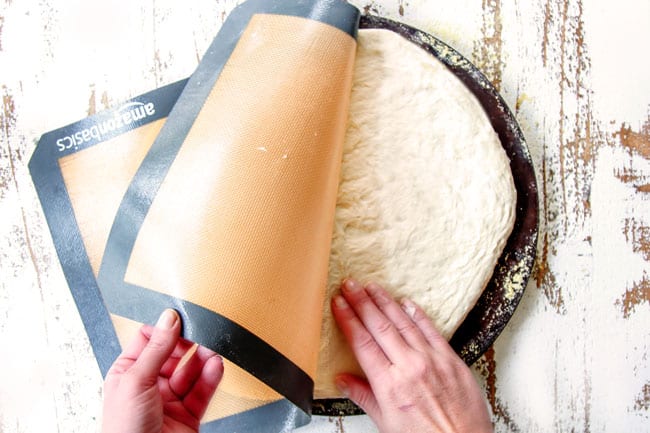
- Step 2 – Make Blender Tzatziki. Slice the cucumber in half lengthwise and scrape out the seeds using a teaspoon. Roughly chop the cucumber and add it to a blender along with all remaining Tzatziki Sauce ingredients and blend until smooth. Add milk, a teaspoon at a time if needed to reach desired consistency. Refrigerate. The sauce is best chilled for at least 1 hour so I suggest making it after the pizza dough.

- Step 3 – Make the pizza sauce. This step is super easy! Add all of the roasted red pepper sauce ingredients to the blender and blend to desired consistency.

- Step 4 – Assemble the pizza. Spread a thin layer of roasted red pepper or pizza sauce over the pizza crust. Top evenly mozzarella, red onions, roasted red peppers, artichokes, olives, and feta.

- Step 5 – Bake the pizza. Bake at 475 degrees F for 12-15 minutes or until the mozzarella cheese has melted (remember the feta won’t melt) and the crust is golden.

- Step 6 – Add the fresh toppings. Remove the pizza from the oven and top with tomatoes, arugula and a drizzle of Tzatziki Sauce. Serve immediately.

TIPS FOR MAKING THE BEST greek PIZZA
- Store bought pizza dough: if you’re using store-bought pizza dough, it’s best to roll it into a ball and let it rise for 3 hours in an olive oil coated bowl covered with a towel. At the very least, let it come to room temperature before shaping.
- Proof the yeast. If making homemade pizza dough, make sure you proof your yeast. You don’t want to go through all the work of making pizza dough only to find it doesn’t rise!
- Brush pizza crust with olive oil. Don’t forget to brush the dough with extra virgin olive oil before adding the toppings because it prevents the crust from getting soggy – but don’t use a heavy hand!
- Grate the cheese yourself. Pre-shredded cheeses contain anti-clumping chemicals which prevent the cheese from melting as easily. More importantly, freshly grated mozzarella tastes better!
- Remove excess moisture from fresh mozzarella. If using fresh mozzarella, make sure to let it drain on paper towels even if it doesn’t seem moist- you’ll be surprised how much moisture is released! I suggest letting it drain for 30 minutes or you will end up with pools of moisture all over your pizza and a soggy crust.
- Prep the toppings before you begin. You want all of the pizza toppings prepped and ready to go so you can assemble the pizza as quickly as possible on the pizza stone before it has a chance to cool down.
- Drain the toppings! It is important to thoroughly blot and even gently squeeze dry the roasted red peppers, artichokes and olives because they are packed in brine or water, otherwise, they will weep when baked and make the pizza soggy.
- Do not add a thick layer of sauce. The thicker the pizza sauce, the soggier the pizza! The sauce should be thin enough you can see the dough through it.
- Make 2 pizzas. This recipe makes one pizza but you can use the arrow keys next to the serving size to increase the servings to 2 pizzas and the ingredients will automatically scale up.
HOW TO BAKE MORE THAN ONE greek PIZZA
This recipe makes one Greek pizza but you can choose to make two pizzas if you wish per above tip. Here’s how to bake and serve two pizzas:
- Serve in batches fresh out of the oven. Serve the first pizza fresh out of the oven while it’s hot. While people are devouring the first pizza, assemble the second pizza and pop it in the oven. By the time they’re done oohing and awing over its brilliance, the second pizza will be done.
- Serve pizzas together. Alternatively, if you want to serve multiple pizzas at once, bake the first one until done then transfer it from the pizza stone to a baking sheet on the counter. Pop your second pizza into the oven. The last couple minutes of baking, place the cooked pizza into the oven on a rack below the pizza stone. Now both pizzas will be hot at the same time!

MAKE AHEAD greek PIZZA RECIPE
The components of this Greek Pizza can be completely made ahead so all that’s left to do at dinner time is assemble the pizza.
- THE DOUGH: let dough rise through the second rise, then tightly wrap each dough ball in plastic wrap. Refrigerate for up to 2 days or freeze for longer storage. When ready to use, unwrap the refrigerated dough and place it on floured surface, parchment paper or nonslip mat. Let the dough come to room temperature before rolling out, about 30-60 minutes.
- THE SAUCE: can be made ahead, and stored in the refrigerator for up to 5 days or frozen for 3 months.
- THE TZATZIKI: can be made 48 hours ahead of time and stored in an airtight container in the refrigerator.
- THE TOPPINGS: can be prepped ahead and stored in separate airtight containers in the refrigerator for up to 48 hours.
HOW TO STORE AND REHEAT
- To store: let the pizza cool completely, then store in an airtight container in the fridge to up to 5 days. Place parchment paper in between slices if stacking.
- To reheat pizza in the oven: line a baking sheet with foil and preheat oven to 375 degrees F. Transfer pizza (slices) to the baking sheet and bake for 8-10 minutes, or until heated through.
- To reheat pizza in the microwave: microwave at 20-second intervals until heated through. Be aware that the crust will lose crunch in the microwave.
- To reheat pizza on the stove: add slices of pizza to a skillet and partially cover. Heat over medium heat for 2-3 minutes until heated through.
- Air fryer: add slices to the basket and air fry for about 5 minutes.
CAN YOU FREEZE PIZZA?
You can freeze Greek Pizza without the fresh toppings or the tomatoes will make the pizza soggy.
To freeze:
- Bake pizza according to directions.
- Let pizza cool completely to room temperature.
- Add pizza slices to a large freezer bag and lay flat OR wrap the entire pizza a few times in plastic wrap, then in foil.
- When ready to eat, remove from packaging and bake at 450 degrees F for 15-20 minutes or until heated through.
WHAT TO SERVE WITH greek pizza?
This Greek Pizza is practically a meal in one or you can serve it alongside comforting soups like Tomato Basil Soup or Greek Lemon Orzo Soup. We also love it with a big Caesar Salad, Strawberry Spinach Salad, Apple Salad or Fall Salad. For fruit, we love a side of grapes to keep with the theme or Perfect Fruit Salad, or Winter Fruit Salad.

WANT TO TRY THIS greek PIZZA RECIPE?
PIN IT TO YOUR DINNER or PIZZA BOARD TO SAVE FOR LATER!
FIND ME ON PINTEREST FOR MORE GREAT RECIPES! I AM ALWAYS PINNING :)!
©Carlsbad Cravings by CarlsbadCravings.com

Greek Pizza
Save This Recipe To Your Recipe Box
You can now create an account on our site and save your favorite recipes all in one place!
Ingredients
Pizza
- ½ recipe Homemade Pizza Dough or store-bought
- 1 cup shredded mozzarella cheese or 6 ounces fresh, cut into ½-inch pieces, drained
- ¼ small red onion, thinly sliced
- ¼ cup roasted red peppers, patted very dry, sliced (from same jar used for the sauce)*
- ½ cup Kalamata olives, sliced lengthwise, patted very dry
- ½ cup artichoke hearts, drained, patted very dry, quartered lengthwise
- ¼ cup crumbled feta or 2 ounces block feta, crumbled
- ½ cup cherry tomatoes, halved
- 1 cup baby arugula
SAUCE – You have two options:
- 1/2 cup recipe Roasted Red Pepper Sauce
- OR 1/2 cup pizza sauce or marinara (homemade or store-bought)
BLENDER TZATZIKI SAUCE – OR STOREBOUGHT TZATZIKI
- ¾ English cucumber or 1 slicing cucumber, peeled
- ½ cup Greek Yogurt
- 1 tablespoon olive oil
- 1 garlic clove, minced
- 1 ½ teaspoons lemon juice
- 1 teaspoon red wine vinegar
- 1 teaspoon dried dill or 1 tablespoon fresh
- 1/2 tsp EACH dried parsley, dried oregano
- 1/4 teaspoon salt
- 1/8 teaspoon pepper
- milk as needed
Instructions
Pizza Dough Prep
- If using homemade pizza dough, prepare dough through step 5, including preheating the pizza stone. Meanwhile, make Blender Tzatziki, Roasted Red Pepper Sauce and prep toppings.
- If using store-bought dough, roll it into a ball, transfer to an olive oil greased bowl and cover with a towel. Let the dough rest at room temperature for 30 minutes up to 3 hours (the longer the better). During the last bit of rising, preheat a pizza stone or baking sheet in the middle rack of your oven for 30-60 minutes at 475 degrees. Meanwhile, make Blender Tzatziki, Roasted Red Pepper Sauce and prep toppings.
Blender Tzatziki
- Slice the cucumber in half lengthwise and scrape out the seeds using a teaspoon. Roughly chop the cucumber and add to the blender along with all remaining Tzatziki Sauce ingredients and blend until smooth. Add milk, a teaspoon at a time if needed to reach dressing consistency. Refrigerate. (Best if chilled at least 1 hour.)
Roasted Red Pepper Sauce
- Remove 2 ounces (¼ cup) roasted red peppers for the pizza topping if desired. Add the rest of the roasted red peppers to a high-powered blender followed by the rest of the recipe ingredients. Blend to desired consistency, scraping down the sides of the blender as needed.
Pizza Dough
- Once the pizza stone is hot, roll the dough out onto a lightly floured nonstick mat or parchment paper into a 12-inch round circle; set aside.
- Carefully remove your hot pizza stone/baking pan from the oven. GENEROUSLY grease the entire surface of the pizza stone/baking pan with olive oil or with nonstick cooking spray. Sprinkle with cornmeal.
- Transfer pizza dough to your prepared pizza stone/baking sheet then pinch edges to create a rimmed crust (if you have trouble transferring, you can place your entire piece of parchment paper on your stone/baking sheet and bake directly on your parchment paper). Tip: if the dough slides easily you are good to go – if not, you need more nonstick cooking spray and cornmeal.
- Lightly brush the top and edges of the crust with about 2 teaspoons olive oil (prevents it from becoming soggy), and sprinkle with garlic salt (don’t forget the edges). Using a fork, prick several holes in the crust.
Toppings
- Evenly spread ½ cup roasted red pepper sauce or pizza sauce over the top of the uncooked dough. Top evenly with mozzarella, red onions, roasted red peppers, artichokes, olives, and feta.
Bake
- Bake at 475 degrees F for 12-15 minutes or until the mozzarella is melted (feta will not melt) and the crust is golden. Carefully remove the pizza from the oven and top with tomatoes and arugula. If you are using store-bought tzatziki, thin it out with some milk. Drizzle Tzatziki over the pizza. Serve immediately.
Video
Notes
- *If making the roasted red pepper sauce, remove ¼ cup red peppers to slice and add to the top of the pizza (optional). Follow the roasted red pepper sauce recipe using the same measurements, no adjustments needed.
- Time saver: save time and use store bought pizza dough, marinara and tzatziki if needed.
- Store-bough pizza dough: try and source pizza dough from local bakeries or pizzerias instead of the grocery store otherwise some grocery stores (including Whole Foods and Trader Joes) sell fresh pizza dough in the refrigerated section where ready-to-bake pizzas are. Trader Joe’s Fresh Ready to Bake Pizza Dough has been voted some of the best around.
- Customize the pizzas: pick and choose the toppings you like. You can even divide the pizza in sections with different toppings.
- Grate the cheese yourself. Pre-shredded cheeses contain anti-clumping chemicals which prevent the cheese from melting as easily. More importantly, freshly grated mozzarella tastes better!
- Remove excess moisture from fresh mozzarella. If using fresh mozzarella, do not use mozzarella packed in water or the cheese will weep too much and leave you with a soggy pizza. Even with fresh low moisture mozzarella, you’ll need to cube then drain it on paper towels for about 30 minutes or you’ll end up with pools of moisture on your pizza.
- Drain the toppings! It is important to thoroughly blot and even gently squeeze dry the roasted red peppers, artichokes and olives because they are packed in brine or water, otherwise, they will weep when baked and make the pizza soggy.
- Prep the toppings before you begin. You want all of the pizza toppings prepped and ready to go so you can assemble the pizza as quickly as possible on the pizza stone before it has a chance to cool down.
- Make 2 pizzas. This recipe makes one pizza but you can use the arrow keys next to the serving size to increase the servings to 2 pizzas and the ingredients will automatically scale up.
MAKE AHEAD greek PIZZA RECIPE
The components of this Greek Pizza can be completely made ahead so all that’s left to do at dinner time is assemble the pizza.- THE DOUGH: let dough rise through the second rise, then tightly wrap each dough ball in plastic wrap. Refrigerate for up to 2 days or freeze for longer storage. When ready to use, unwrap the refrigerated dough and place it on floured surface, parchment paper or nonslip mat. Let the dough come to room temperature before rolling out, about 30-60 minutes.
- THE SAUCE: can be made ahead, and stored in the refrigerator for up to 5 days or frozen for 3 months.
- THE TZATZIKI: can be made 48 hours ahead of time and stored in an airtight container in the refrigerator.
- THE TOPPINGS: can be prepped ahead and stored in separate airtight containers in the refrigerator for up to 48 hours.
HOW TO STORE AND REHEAT
- To store: let the pizza cool completely, then store in an airtight container in the fridge to up to 5 days. Place parchment paper in between slices if stacking.
- To reheat pizza in the oven: line a baking sheet with foil and preheat oven to 375 degrees F. Transfer pizza (slices) to the baking sheet and bake for 8-10 minutes, or until heated through.
- To reheat pizza in the microwave: microwave at 20-second intervals until heated through. Be aware that the crust will lose crunch in the microwave.
- To reheat pizza on the stove: add slices of pizza to a skillet and partially cover. Heat over medium heat for 2-3 minutes until heated through.
- Air fryer: add slices to the basket and air fry for about 5 minutes.

Did You Make This Recipe?
Tag @CarlsbadCravings and Use #CarlsbadCravngs
Leave a Review, I Always Love Hearing From You!
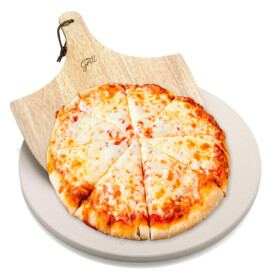


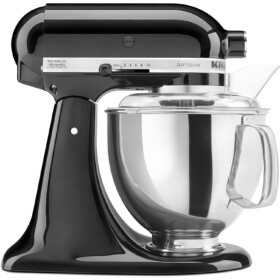


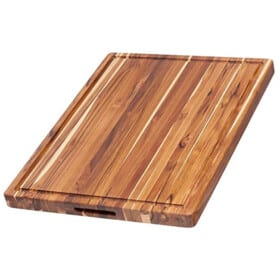

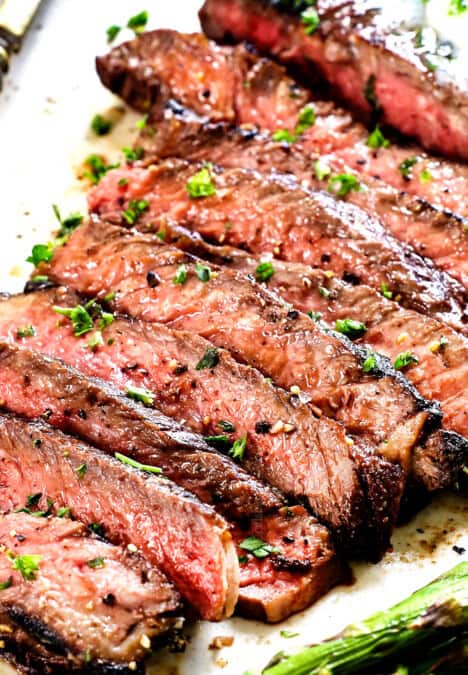



























leave a review